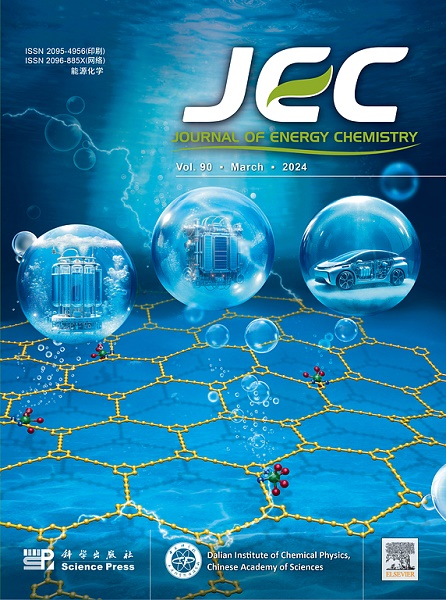Root-inspired self-healing binder enabling robust micron-sized SiO electrodes with durable lithium storage stability
IF 13.1
1区 化学
Q1 Energy
引用次数: 0
Abstract
Silicon monoxide (SiO) is highly attractive as an anode material for high-energy lithium-ion batteries (LIBs) due to its significantly higher specific capacity. However, its practical application is hindered by substantial volume expansion during cycling, which leads to material pulverization and an unstable solid electrolyte interphase (SEI) layer. Inspired by the natural root fixation in soil, we designed a root-like topological structure binder, cassava starch-citric acid (CS-CA), based on the synergistic action of covalent and hydrogen bonds. The abundant –OH and –COOH groups in CS-CA molecules effectively form hydrogen bonds with the –OH groups on the SiO surface, significantly enhancing the interfacial interaction between CS-CA and SiO. The root-like topological structure of CS-CA with a high tolerance alleviates the mechanical stress generated by the volume changes of SiO. More encouragingly, the hydrogen bond action among CS-CA molecules produces a self-healing effect, which is advantageous for repairing damaged electrodes and preserving their structural integrity. As such, the CS-CA/SiO electrode exhibits exceptional cycling performance (963.1 mA h g−1 after 400 cycles at 2 A g−1) and rate capability (558.9 mA h g−1 at 5 A g−1). This innovative, topologically interconnected, root-inspired binder will greatly advance the practical application of long-lasting micron-sized SiO anodes.

求助全文
约1分钟内获得全文
求助全文
来源期刊

Journal of Energy Chemistry
CHEMISTRY, APPLIED-CHEMISTRY, PHYSICAL
CiteScore
19.10
自引率
8.40%
发文量
3631
审稿时长
15 days
期刊介绍:
The Journal of Energy Chemistry, the official publication of Science Press and the Dalian Institute of Chemical Physics, Chinese Academy of Sciences, serves as a platform for reporting creative research and innovative applications in energy chemistry. It mainly reports on creative researches and innovative applications of chemical conversions of fossil energy, carbon dioxide, electrochemical energy and hydrogen energy, as well as the conversions of biomass and solar energy related with chemical issues to promote academic exchanges in the field of energy chemistry and to accelerate the exploration, research and development of energy science and technologies.
This journal focuses on original research papers covering various topics within energy chemistry worldwide, including:
Optimized utilization of fossil energy
Hydrogen energy
Conversion and storage of electrochemical energy
Capture, storage, and chemical conversion of carbon dioxide
Materials and nanotechnologies for energy conversion and storage
Chemistry in biomass conversion
Chemistry in the utilization of solar energy
 求助内容:
求助内容: 应助结果提醒方式:
应助结果提醒方式:


